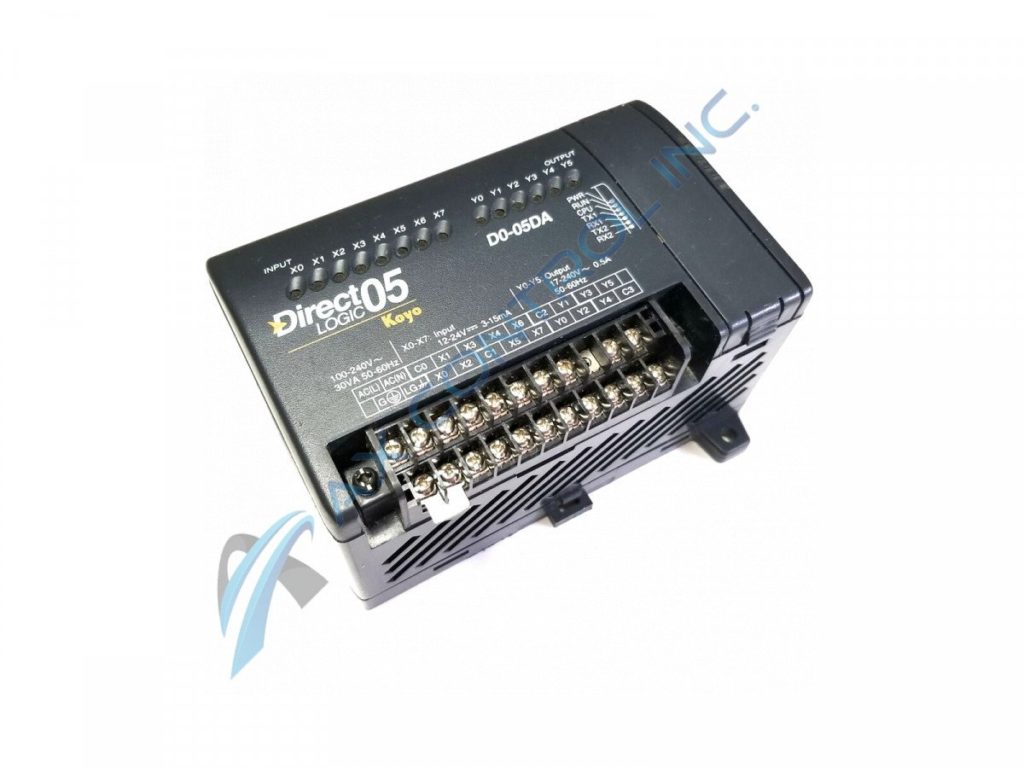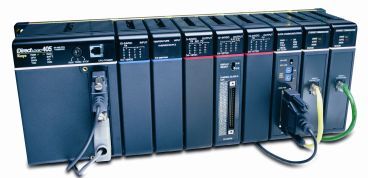FAQs, and an Infographic you can use.
How does a programmable logic controller work?
A PLC works like a computer. The CPU manipulates and processes input signals and executes instructions to control output devices. These are the controllers behind most modern industrial automation.
What are programmable logic controllers used for?
PLCs are used in industrial settings for the control of light fixtures, machinery, and assembly lines. They are also used to control other things such as amusement park rides.

Are there different types of PLCs?
Yes. There are Relay Output PLCs, Transistor Output PLCs, and Triac Output PLCs. The name of each type of PLC derives from its output. Relay outputs are solid-state outputs or mechanical contacts. Transistor outputs are solid-state switches, but can only handle DC current. Low-power AC loads use Triac outputs. This includes motor starters and lighting.
Mechanical design is another way to categorize PLCs. For example, a “brick” is one type of PLC design. This is a small PLC that includes the CPU, the power supply, and the inputs/outputs in one small case. One type of brick PLC is the DirectLogic 05.

Other PLCs are modular. Modular PLCs have a rack system that has space for different modules. These modules can provide different functions and may act as the PLC’s power supply, I/O, communication interface, or processor.

How are PLCs programmed?
PLCs use a traditional programming language that mimics circuit diagrams; this is called ladder logic. Other PLCs may use programming languages like Function Block Diagram (FBD), Instruction List (IL), Sequential Function Chart (SFC), or Structured Text (ST). IEC 61131–3 standard defines these languages.
What are the advantages of using a PLC?
There are several. PLCs are easy to install, maintain, and troubleshoot. They are flexible by nature and offer many different operations. Also, they offer a rugged design specifically for industrial processes. Finally, they’re cost-effective.
Are There Disadvantages to PLCs?
The most common disadvantage to PLCs stems from interoperability or lack thereof.
Originally, manufacturers created PLCs using their own proprietary software and programming. When machines did their own thing, separated from the rest of the machinery on the factory floor, that was fine.
But now we have IIoT efficiencies to think about. Machines need to “talk” to each other and share information. Unfortunately, older PLC design doesn’t allow this.
Luckily, industry groups are now working to solve this problem through new forms of open-access middleware like MQTT, AMQP, and CoAP.
If you need a PLC for your industrial processes, talk to the staff at AX Control today. We’re here to help! We offer many brands of PLC systems and replacement parts, including the popular GE Fanuc PLCs.

You must be logged in to post a comment.